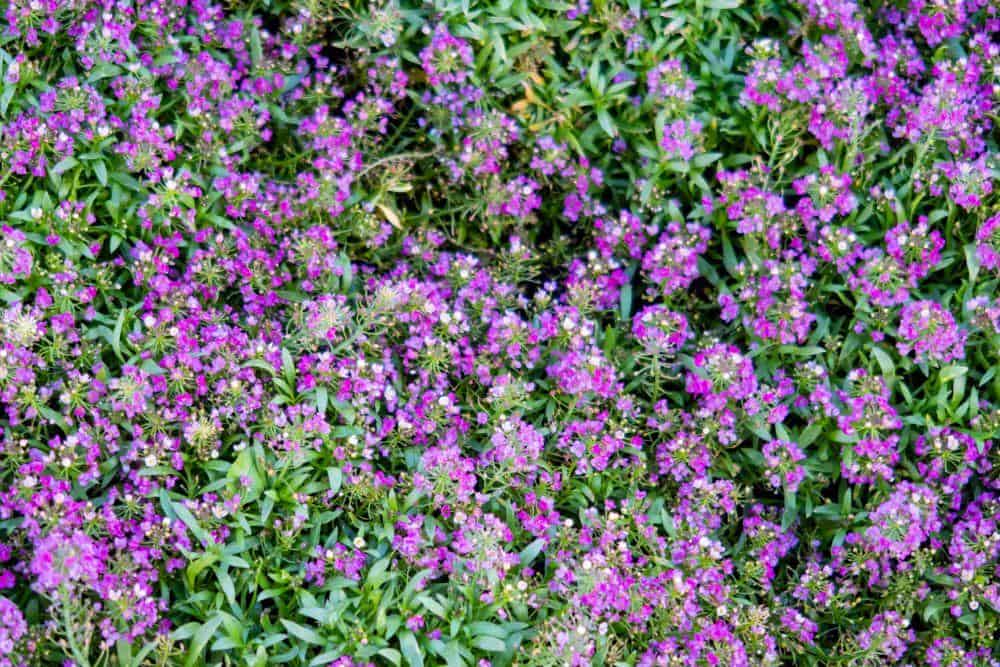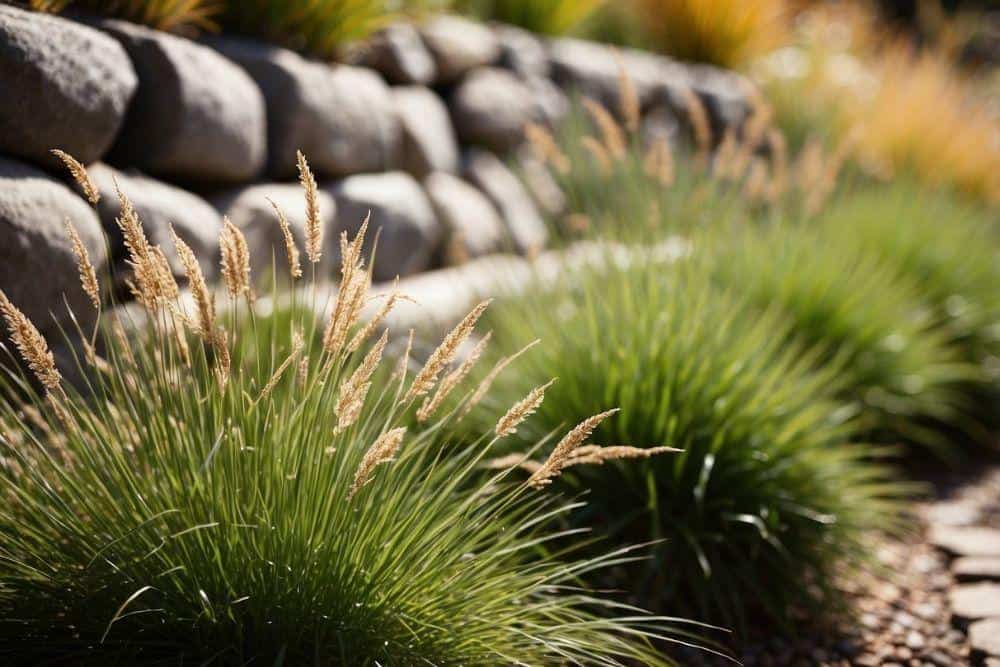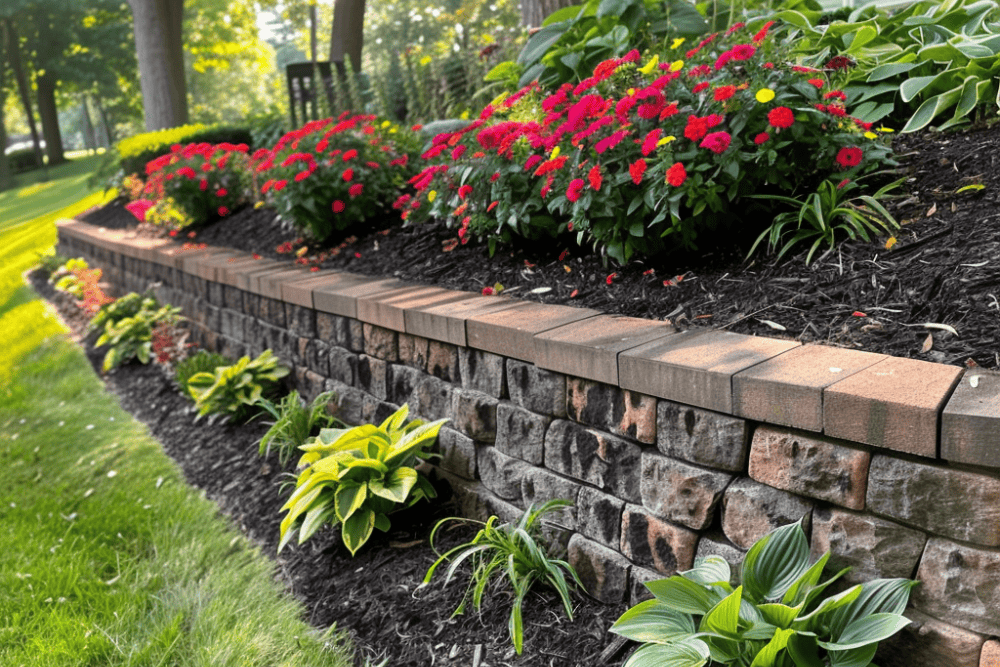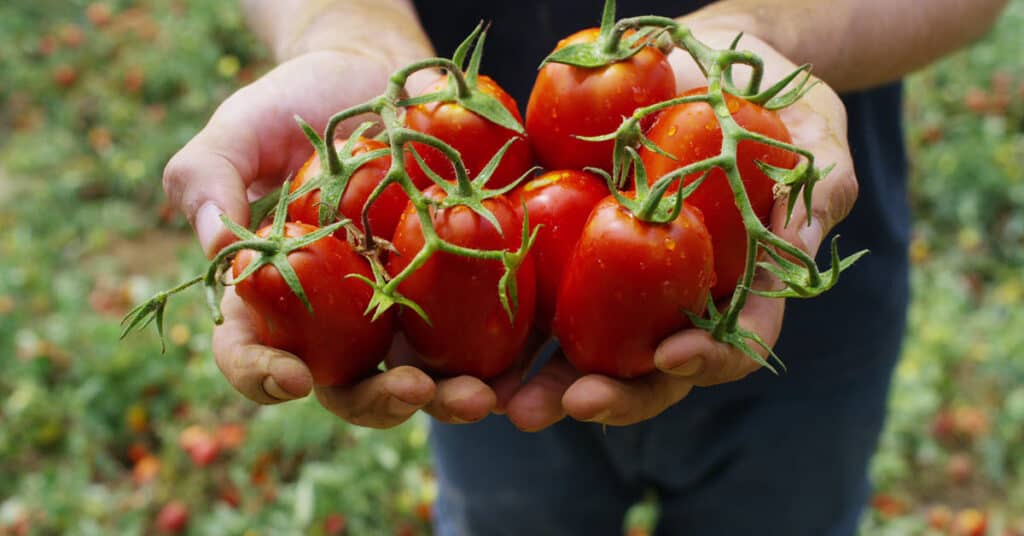Soft Landscaping = Organic Landscaping Elements
Soft landscaping, also called softscape, involves designing with living elements such as trees, shrubs, and flowers. These soft landscape elements don’t involve construction work. Instead, they bring life to the garden through greenery and color. Soft landscaping includes container gardens, potted plants, and hanging baskets.

Creeping Thyme is a Ground Cover That is Installed as a Soft Landscaping Element
Softscape vs. Hardscape
Both hardscape and soft landscape materials are crucial in landscape design. You’ll find elements of both are used in landscape construction.
A Hardscape refers to non-living elements like pathways, patios, and walls. In contrast, softscape includes plants and organic materials. . Hard landscaping elements provide structure and boundaries, while softscapes add natural beauty.
Landscapers combine hardscape and softscape elements to create cohesive and functional outdoor spaces. For instance, you might use hardscape for a patio or outdoor kitchen and surround it with softscape elements like flower beds and shrubs. This balance helps to achieve a harmonious and sustainable garden design, enhancing both functionality and aesthetic appeal.
The Elements of Soft Landscaping
Soft landscaping focuses on enhancing outdoor spaces using living elements like plants, grass, and soil. It aims to create a beautiful and functional environment that supports biodiversity and adds aesthetic value to a property.
Plant Selection
Choosing the right plants is crucial in soft landscaping. Plants can range from ornamental grasses to vibrant flowers, and trees. Each type of plant has its specific needs and benefits. For instance, an outdoor space may have soft landscape elements like shrubs for privacy – as well as a blooming flower bed to add color to your outdoor area. 
Ornamental Grasses Combined with Hard Landscaping Elements Like Retaining Walls, Landscaping Rocks and a Walkway
Turf and Grass Areas
Turf areas or lawns are another key element in soft landscaping. Lawns provide open spaces for recreation and improve the visual balance in a garden. Different types of grass are suitable for various climates and uses. For example, Kentucky bluegrass is ideal for cooler climates, whereas Bermuda grass thrives in warmer areas.
Maintaining a healthy lawn involves regular mowing, watering, and fertilizing. Ornamental grasses can be used to add texture and movement to the garden. These grasses often require less water and maintenance compared to traditional lawns, making them a sustainable choice.
Soil and Mulch
Healthy soil is the foundation of any successful soft landscaping project. Soil provides the necessary nutrients for plants to grow. It is important to test the soil to determine its pH level and nutrient content. Adding organic matter like compost can improve soil structure and fertility.
Mulch plays a significant role in protecting and enhancing soil. Mulch helps retain moisture, suppress weeds, and regulate soil temperature. Common mulching materials include wood chips, bark, and straw. Applying a layer of mulch around plants and trees not only improves their health but also gives the garden a neat and polished appearance.
Design Principles in Soft Landscaping
Soft landscaping involves the use of living elements like plants, trees, and flowers to create aesthetically pleasing garden spaces. Key design principles such as color and texture, balance and rhythm, and focal points and features ensure these elements work harmoniously.
Color and Texture
Color plays a significant role in creating visual appeal in a garden. Different hues can evoke various emotions and set the tone of the landscape. For instance, warm colors like reds and oranges create excitement, while cool colors such as blues and greens have a calming effect. Texture is equally essential, adding variety and depth to the garden. Combining fine-textured plants like grasses with coarse-textured ones such as large-leafed shrubs can enhance visual interest.
Using a consistent color palette helps unify the garden, making it feel cohesive. Consider seasonal changes, as different plants will bloom at various times, altering the garden’s color scheme. Choosing plants with contrasting colors can highlight specific areas and create dynamic scenery.
Balance and Rhythm
Balance in soft landscaping ensures all parts of the garden feel proportionate and harmonious. This doesn’t necessarily mean symmetry, but rather a pleasing distribution of visual weight. For example, pairing tall trees on one side with shorter shrubs on the other can achieve balance. Rhythm guides the viewer’s eye through the garden, creating a sense of flow and movement. Repeating certain plants, textures, or colors at regular intervals helps establish rhythm, making the space feel organized and intentional.
Using plants of various heights and shapes can maintain interest and avoid monotony. Incorporating different plant species in a thoughtful pattern can create rhythm without clutter. Placement of paths and garden features also contributes to the overall balance and rhythm, guiding people on a visually engaging journey through the garden.
Soft Landscaping Techniques
Soft landscaping involves various techniques to maintain and enhance the aesthetics and health of your garden. These methods include pruning and trimming plants, ensuring proper irrigation and drainage, and creating well-defined edges and borders.
Pruning and Trimming
Pruning and trimming are essential tasks for maintaining healthy plants. Regular trimming keeps plants looking tidy and encourages new growth. Pruning helps remove dead or diseased branches, which improves plant health.
Techniques include:
- Deadheading: Removing dead flowers to promote more blooms.
- Thinning: Reducing plant density to allow more light and air circulation.
- Shaping: Creating desired shapes for hedges and shrubs.
Proper tools like shears and pruning saws are crucial. Different plants need varied pruning times; for instance, spring-flowering plants should be pruned after blooming.
Irrigation and Drainage
Effective irrigation and drainage are vital for plant health. Irrigation ensures that plants get the right amount of water, while proper drainage prevents waterlogging, which can harm roots.
Key techniques:
- Drip Irrigation: Delivers water directly to the roots, minimizing evaporation.
- Sprinkler Systems: Suitable for larger lawns and gardens.
Maintaining drainage involves:
- Installing French Drains: Channels water away from plant areas.
- Using Mulch: Helps retain soil moisture and prevents erosion.
- Raised Beds: Ensures better water flow in heavy soils.

A Raised Planting Area Including Softscape Elements Like Flowers and Shrubs Along with a Retaining Wall Hardscape Element. This Installation is Supported by Proper Drainage to Prevent Water From Putting Too Much Pressure on the Retaining Wall
Edging and Borders
Edging and borders define garden spaces, making them look neat and organized. Edging materials include stone, metal, or plastic, which create clear separations between lawns and garden beds.
Key steps:
- Laying Edging Materials: Choose suitable materials for durability and aesthetics.
- Spacing and Alignment: Ensure consistent spacing and straight lines or smooth curves.
- Maintaining Edges: Regularly trim grass and keep borders clear of weeds.
Borders can also be created with plants like low-growing shrubs or perennial flowers, which add both structure and beauty. For added effect, layered planting with varying heights can create depth and interest.
